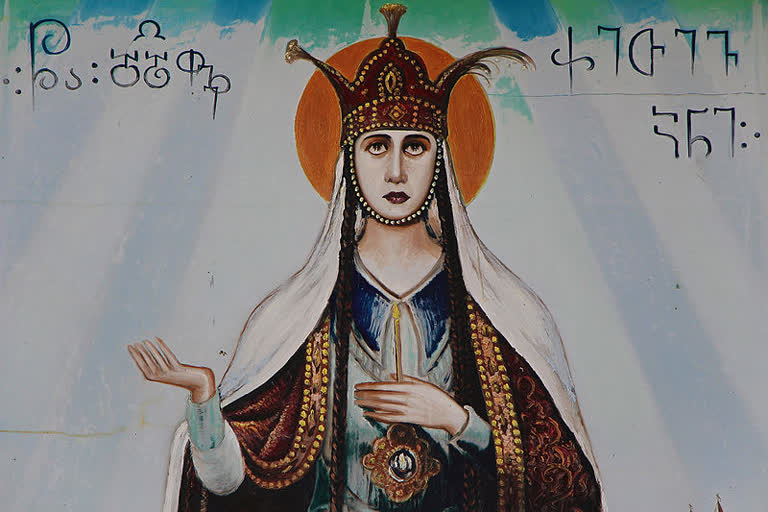Panaji: Sixteenth-century saint, Georgia's Queen Ketavan's relics have emerged as one of the key highlights of Union External Affairs Minister S. Jaishankar's two-day visit to Tbilisi. But N. Taher, a veteran archaeologist who led the team which discovered the relics in 2005, prefers to add a prefix, 'mother' while referring to the late queen of Kakheti, an erstwhile kingdom in east Georgia.
"She sacrificed (her life) for her country. She is worshipped as a martyred saint. I personally call her Mother Saint Queen Ketevan," said Taher, who led the Archaeological Society of India's (ASI) team which was in charge of tracing the relics. On Friday, Jaishankar, during his two-day visit to Georgia, the first by an Indian External Affairs Minister to Tbilisi, handed over the Holy Relics of St. Queen Ketevan to the people of the former Soviet state.
Ketevan was killed in Shiraz in 1624 after she refused to convert from Christianity to Islam. She was later canonised as a saint by the Georgian Orthodox Church. Her stoic defiance of religious persecution is believed to have inspired the followers of the Georgian Church. But the journey of her relics, a right arm bone, from Shiraz and their subsequent discovery centuries later, interred in an Augustinian monastery, located in the Old Goa Church complex, is laced with mystery.
According to K.K. Mohammed, a former ASI Superintendent Archaeologist who also led a previous mission to unearth the relics before Taher, India was an obvious destination for oppressed religious orders."India was always a country where refugees made way to, from time immemorial. Jews came to India, Zoroastrians too... Queen Ketevan travelled in death, while all others came in when she was alive," Mohammed told the media.
Read: Twitter India names Vinay Prakash as resident grievances officer
After the relics made its way in the 17th century to Goa, which was then referred to as the 'Rome of the East' during the Portuguese colonial era, they appeared to have vanished from the surface of the earth. It was only nearly two decades ago that researchers found documents which traced the journey of the relics to Goa. At the prodding of the authorities in Georgia, where Queen Ketevan continues to be referred, the ASI, a Central government agency, was tasked with the responsibility of tracking down the relics.
After two ASI teams prodded on with the assigned high profile task, without much headway, it was the discovery of a key tombstone by the team led by Taher, which helped them crack the mystery. The relics were eventually excavated from below a window sill of the monastery. After DNA verification, the relics were loaned to Georgia for six months for an exposition in 2017, but Jaishankar's gesture of offering the relics on a permanent transfer to Tbilisi, is a kind of an emotional return for the revered martyr."It is a kind of emotional return. She is the patron saint of Georgia. It is an emotional event for Georgians.
It is the best expression of our foreign policy, just like we offered Lord Buddha's relics to Sri Lanka some time back," Mohammed said. Goa-based historian Prajal Sakhardande however says the dispatch of the relics to Georgia was a sad moment for the coastal state."While I stand for the historic relics being returned, I also feel a sense of loss because these relics of Queen Ketevan are a part of Goa's history and heritage. Even if a small bit of the relic could have been be left in Goa, it would serve as a constant connect to the histories of both regions," Sakhardande said.
According to Fr. Visitacao Monteiro, a historian-priest, the historic UNESCO-endorsed Old Goa Church complex could hold the key to many more mysteries rooted in historical significance and needed better exploring and care. "The site could possibly hold many more such remains of historical significance, but is being neglected and could be lost forever. Even the existing churches that have been preserved need more effort and will to preserve," Monteiro said.
(IANS)



